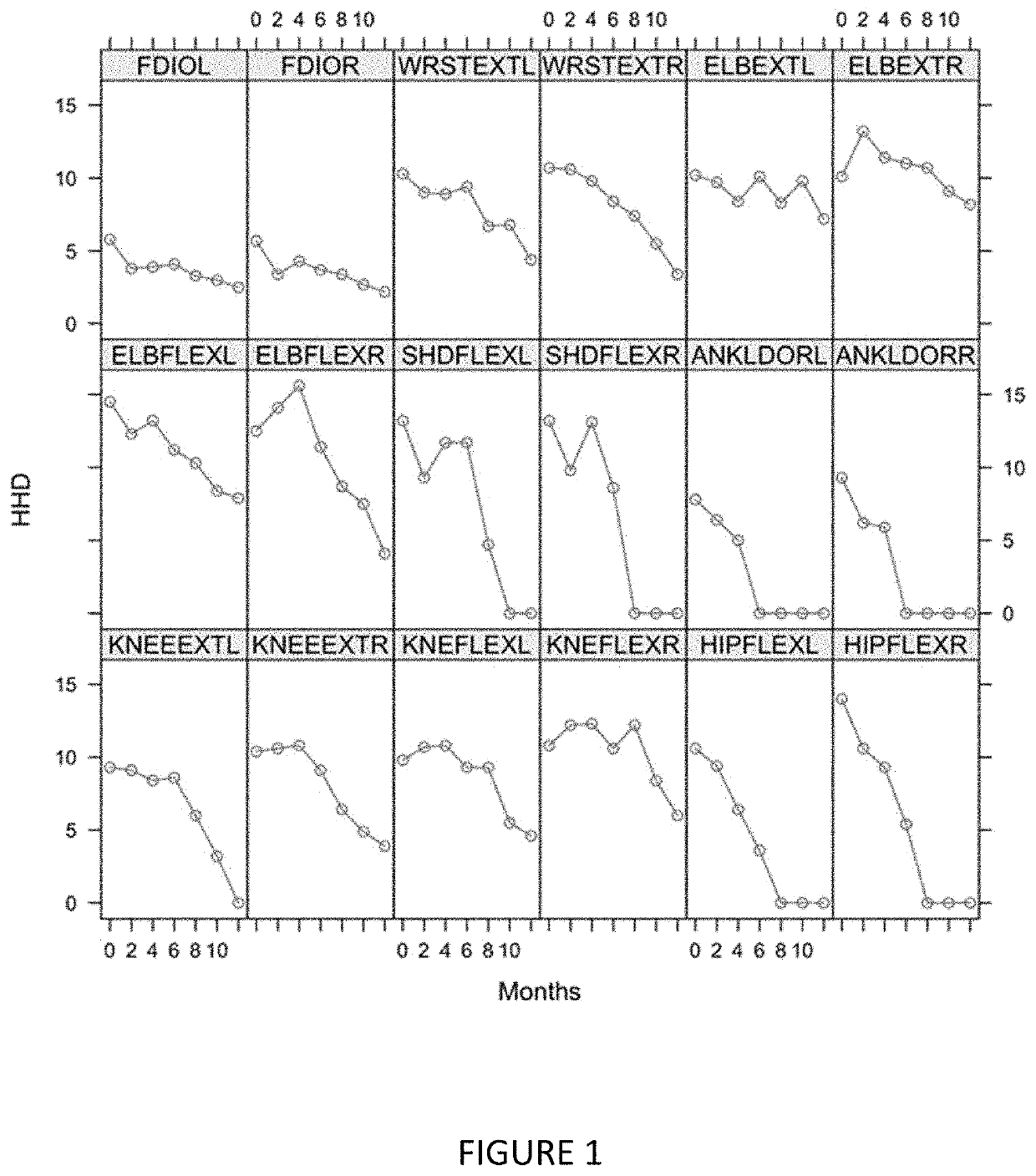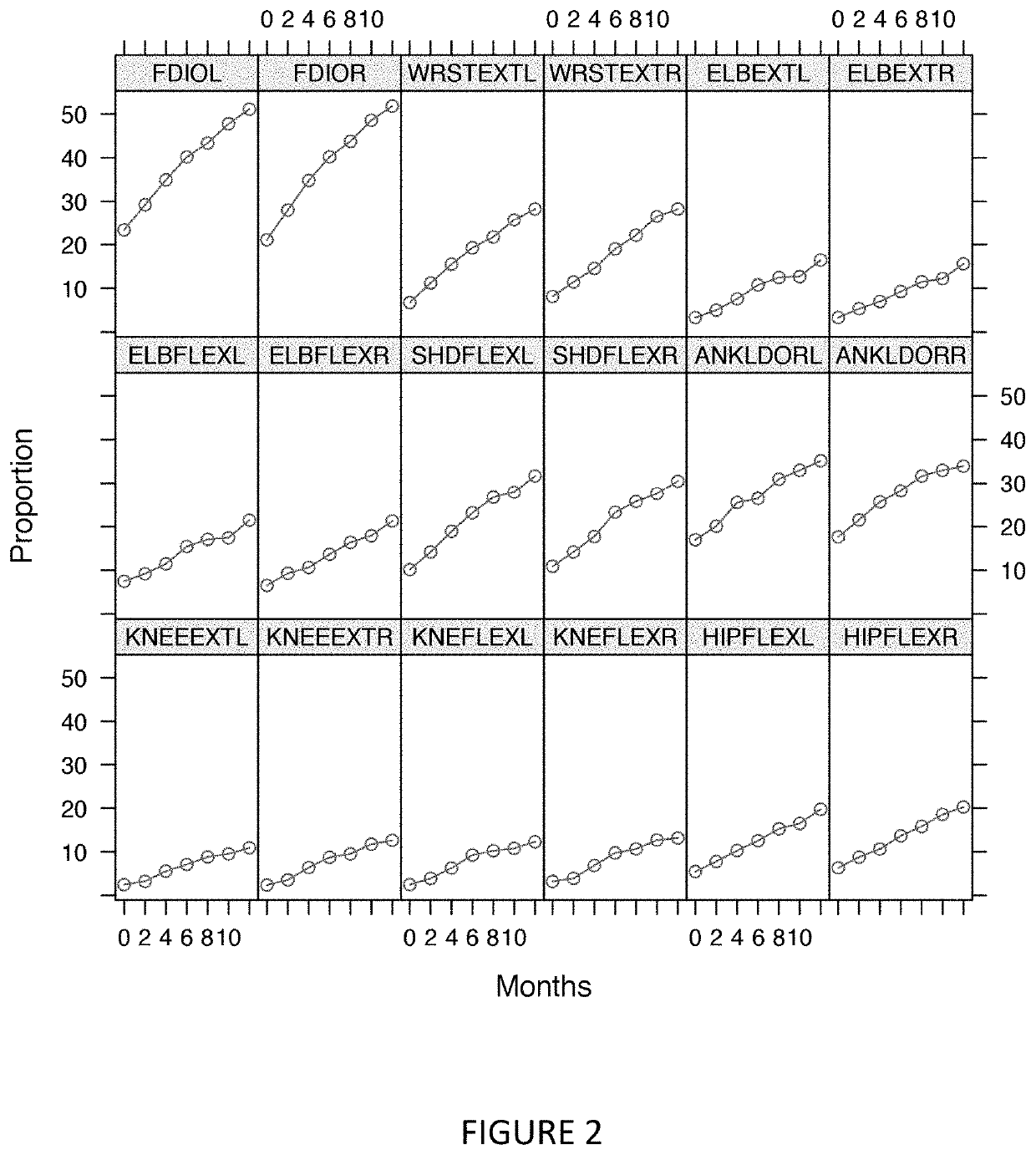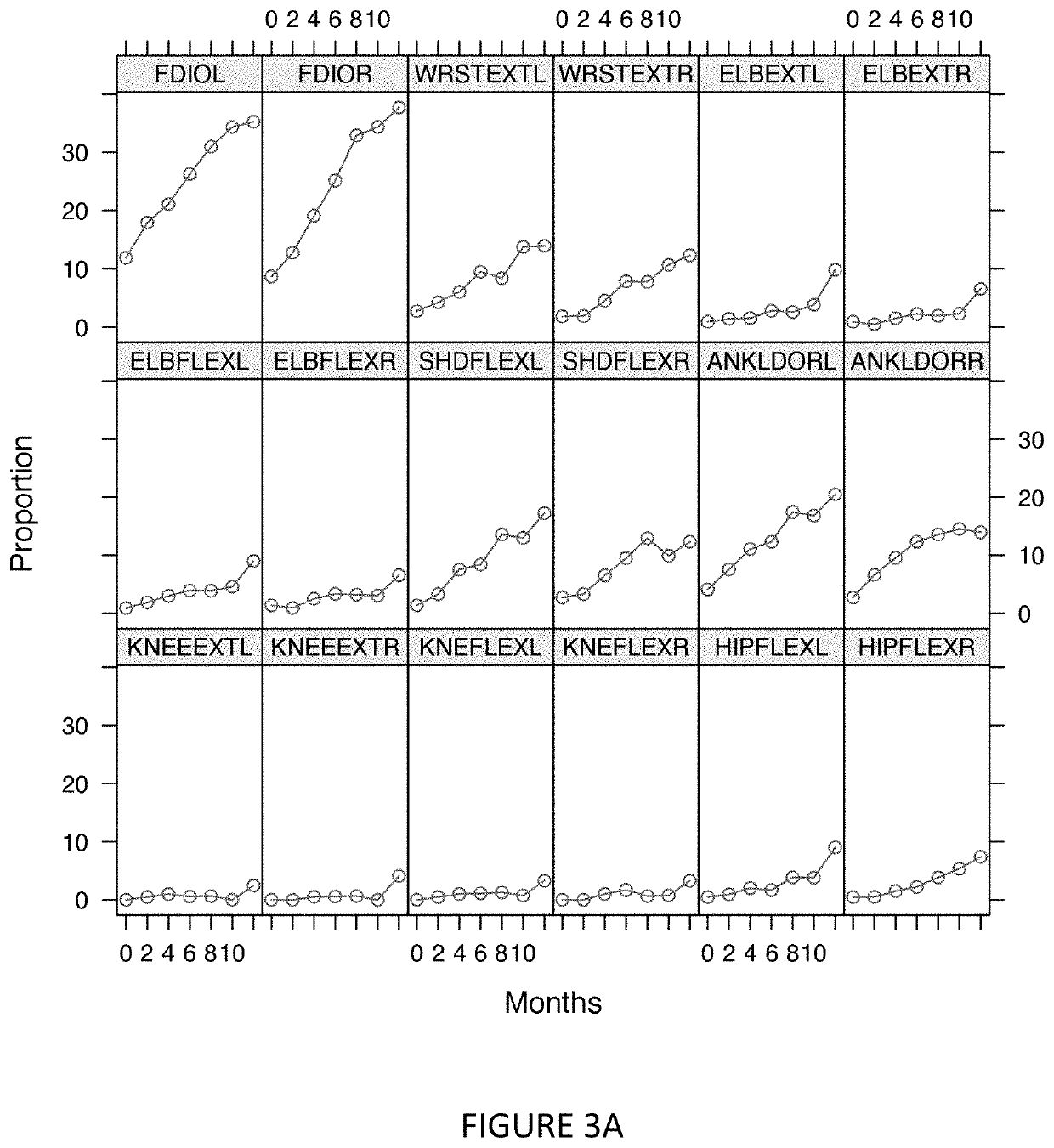Methods for evaluating patients
a technology for evaluating patients and patients, applied in the field of measuring muscle function, can solve the problems of large sample size, long follow-up time, and limited traditional endpoints of survival and alsfrs (or alsfrs-r), and achieve the effect of accurate and sensitive methods, and sensitive to track disease progression
- Summary
- Abstract
- Description
- Claims
- Application Information
AI Technical Summary
Benefits of technology
Problems solved by technology
Method used
Image
Examples
example 1
ation of a Novel Endpoint Based on Muscle Strength Measures
[0307]Muscle strength testing was used as a secondary endpoint in two recent ALS clinical trials, the ceftriaxone study (Cudkowicz et al., “Safety and efficacy of ceftriaxone for amyotrophic lateral sclerosis: a multi-stage, randomized, double-blind, placebo-controlled trial”, Lancet Neurol 2014, 13:1083-91; hereby incorporated by reference in its entirety) and the EMPOWER study (Cudkowicz et al., “Dexpramixpexole versus placebo for patients with amyotrophic lateral sclerosis (EMPOWER): a randomized, double-blind, phase 3 trial”, Lancet Neurol 2013, 12:1059-67; hereby incorporated by reference in its entirety). As described in this example, the results from the muscle strength testing obtained in both of these studies were analyzed in order to identify a new endpoint based on muscle strength measures.
[0308]The ceftriaxone study was a multi-stage, randomized, double-blind, placebo-controlled study. Participants of the study h...
example 2
n of the Novel Muscle Strength Endpoint to Traditional Endpoints
[0319]Comparison between the proportion of patients reaching zero strength or death to the ALSFRS-R scale for the same patients is shown in FIG. 6. This comparison shows that the ALSFRS-R is more sensitive than using survival as an endpoint for tracking disease progression. This comparison also shows that the new endpoint utilizing the measurement of zero function (e.g., zero strength) is even more sensitive than ALSFRS-R in tracking disease progression. In contrast, comparison between evaluation by ALSFRS-R or by using megascores generated from muscle strength measurements shows that ALSFRS-R is more sensitive for tracking disease progression (FIG. 7). Thus, although computing megascores involves measuring muscle strength, these results clearly show that the type muscle strength information used, and manipulation of the muscle strength information, is important for determining the timepoint of when a muscle, or a prese...
example 3
g Additional Muscle Strength Endpoint(s)
[0320]Muscle strength loss was measured over time for 18 muscle pairs in the EMPOWER trial using the microFET2 Hand Held Dynamometer (FIG. 11). Decline of strength was seen across all muscles tested and varied across muscle groups. Decline of strength was accentuated distally. This suggests that the more pronounced muscle measurements, and possibly more expeditious and / or prophetic of disease progression, are those of more distal muscles.
[0321]The correlation (Spearman's coefficient) of baseline strength and rate of strength decline between right side and left side muscles of subjects in the EMPOWER study was determined (FIG. 13). Strength at baseline and strength decline are consistent between right and left side muscles of a given pair for all muscles evaluated. This suggests that monitoring the strength and / or strength decline of one muscle of a right / left pair may be sufficient for evaluating that pair's muscle strength.
[0322]The correlati...
PUM
 Login to View More
Login to View More Abstract
Description
Claims
Application Information
 Login to View More
Login to View More - R&D
- Intellectual Property
- Life Sciences
- Materials
- Tech Scout
- Unparalleled Data Quality
- Higher Quality Content
- 60% Fewer Hallucinations
Browse by: Latest US Patents, China's latest patents, Technical Efficacy Thesaurus, Application Domain, Technology Topic, Popular Technical Reports.
© 2025 PatSnap. All rights reserved.Legal|Privacy policy|Modern Slavery Act Transparency Statement|Sitemap|About US| Contact US: help@patsnap.com



